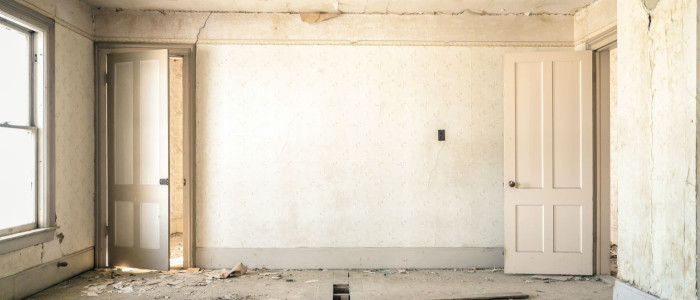Landlord Insurance for Malicious Damage
The Smart Way To Get Landlord Cover
Compare Top UK Landlord Insurance Providers
Personalised quotes in 2 minutes!
FREE & no obligation – Quick online quotes
Compare Landlord Insurance >>
Top 10 Considerations When Buying Landlord Insurance With Malicious Damage Cover
Malicious damage protection is an optional add-on for landlord insurance policies. It covers vandalism, intentional damage, or theft by tenants.
While providing helpful peace of mind, malicious damage cover comes with caveats.
Here are 10 key factors for landlords to consider:
-
Common Malicious Damage Scenarios
Typical malicious incidents include smashed windows, graffitied walls, damaged doors, broken fixtures or stolen appliances. Inventory lists and photos evidencing the damage help claims. Theft of landlord contents like white goods is also covered if forceful entry is proven. Understanding common scenarios helps set realistic expectations.
-
Policy Excesses
Most insurers impose an increased policy excess for malicious damage claims, often £500-£1000. Review if you can afford these excess levels if a claim is needed. Higher excesses bring down the premium but increase your own payout per claim.
-
Tenancy Type Limitations
Malicious damage cover may be restricted to certain tenancy types, like excluded occupiers or tenants without Assured Shorthold Tenancy agreements. This can exclude lodgers or subletters. Check who is classified as a “tenant” under your policy wording.
-
Protection for Outbuildings
Outbuildings like garages and sheds may not be included under standard buildings cover.
Check malicious damage includes these structures too. Contents kept in outbuildings may also need specifying separately on the policy.
FREE & no obligation – Quick online quotes
Compare Landlord Insurance >>
-
Cover Limits
Check for any limits on malicious damage cover regarding value per claim or in total per year. Restrictions like £2,500 per claim or £5,000 annually can be expected. Know the limits to avoid underinsuring.
-
Lock Replacement
If keys are stolen, and locks must be replaced to secure the property, this may not be included automatically. Some insurers provide lock replacement following theft up to £500-£1,000. But check your policy documents for clarity.
-
Distinguishing Damage Types
With accidental damage versus malicious damage, insurers may dispute which claim type applies. For example, determining culpability can be tricky if a kitchen sink is blocked and floods a property. Only malicious damage is covered.
-
Evidence Requirements
Insurers will require police reports as evidence for significant malicious damage claims. They may also reject claims where malicious intent can’t be firmly proven. Keeping a detailed inventory also helps demonstrate missing or damaged items.
-
Tenant Referencing Standards
Most insurers require tenant referencing checks like credit checks and references from previous landlords before providing valid cover. Ensure referencing procedures meet the insurer’s standards.
-
Unoccupied Period Exclusions
Standard policies exclude cover when properties are empty for 30+ days. Malicious damage cover may also be restricted during vacant periods between tenancies. Unoccupied property insurance is needed to plug this gap.
Scrutinising policy terms for malicious damage gives landlords clarity on claim scenarios. While added protection, limitations apply, so it’s not a catch-all safeguard. Proper tenant vetting and referencing remain key to mitigating malicious damage risks.
Finding a policy that provides the loss of rent cover due to malicious damage might be able to reimburse you the rent you lost due to this damage.
FREE & no obligation – Quick online quotes
Compare Landlord Insurance >>
Landlord Insurance Providers
- AA Landlord Insurance
- Aviva Landlord Insurance
- AXA Landlord Insurance
- Barclays Landlord Insurance
- Churchill Landlord Insurance
- CIS Landlord Insurance
- Direct Line Landlord Insurance
- Endsleigh Landlord Insurance
- Halifax Landlord Insurance
- HSBC Landlord Insurance
- John Lewis Landlord Insurance
- Legal & General Landlord Insurance
- LV= Landlord Insurance
- MORE TH>N Landlord Insurance
- Nationwide Landlord Insurance
- NatWest Landlord Insurance
- Norwich Union Landlord Insurance
- Sainsbury’s Landlord Insurance
- Simple Landlords Insurance
- Simply Business Landlord Insurance
- Smart Landlord Insurance
- Swinton Landlord Insurance
- Tesco Landlord Insurance
- Towergate Landlord Insurance
Landlord Insurance Popular Searches
- Discount Landlord Insurance
- Landlord Boiler Insurance
- Landlord Building Insurance
- Landlord Commercial Building Insurance
- Landlord Contents Insurance
- Landlord Emergency Cover
- Landlord Home Insurance
- Landlord Home Insurance Advice
- Landlord Homeowners Insurance
- Landlord House Insurance
- Landlord Insurance Accidental Damage Cover
- Landlord Insurance Companies
- Landlord Insurance Comparison Sites
- Landlord Insurance Cost
- Landlord Insurance Definition
- Landlord Insurance Excess
- Landlord Insurance for DSS Tenants
- Landlord Insurance for Empty Property
- Landlord Insurance for Flats
- Landlord Insurance for HMOs
- Landlord Insurance for Holiday Rental
- Landlord Insurance for Kitchen Appliances
- Landlord Insurance for Malicious Damage
- Landlord Insurance for Multiple Properties
- Landlord Insurance for Non-UK Residents
- Landlord Insurance for Northern Ireland
- Landlord Insurance for Rental Property
- Landlord Insurance for Scotland
- Landlord Insurance for Student Letting
- Landlord Insurance for Students
- Landlord Insurance for Subletting
- Landlord Insurance for Tenant Damage
- Landlord Insurance for Unoccupied Property
- Landlord Insurance for Vacant Property
- Landlord Insurance in London
- Is Landlord Insurance a Legal Requirement?
- Landlord Insurance Online Quote
- Landlord Insurance Pay Monthly
- Landlord Insurance Price Comparison
- Landlord Insurance Quotes
- Landlord Legal Insurance
- Landlord Liability Insurance
- Landlord Rent Guarantee Insurance
- Landlord Rental Insurance
- Landlords Home Insurance
- Rental Property Insurance
- Residential Landlord Insurance
- Short Term Landlord Insurance
- UK Landlord Insurance
- What Does landlord Insurance Cover?
- Why You Need Landlord Insurance


